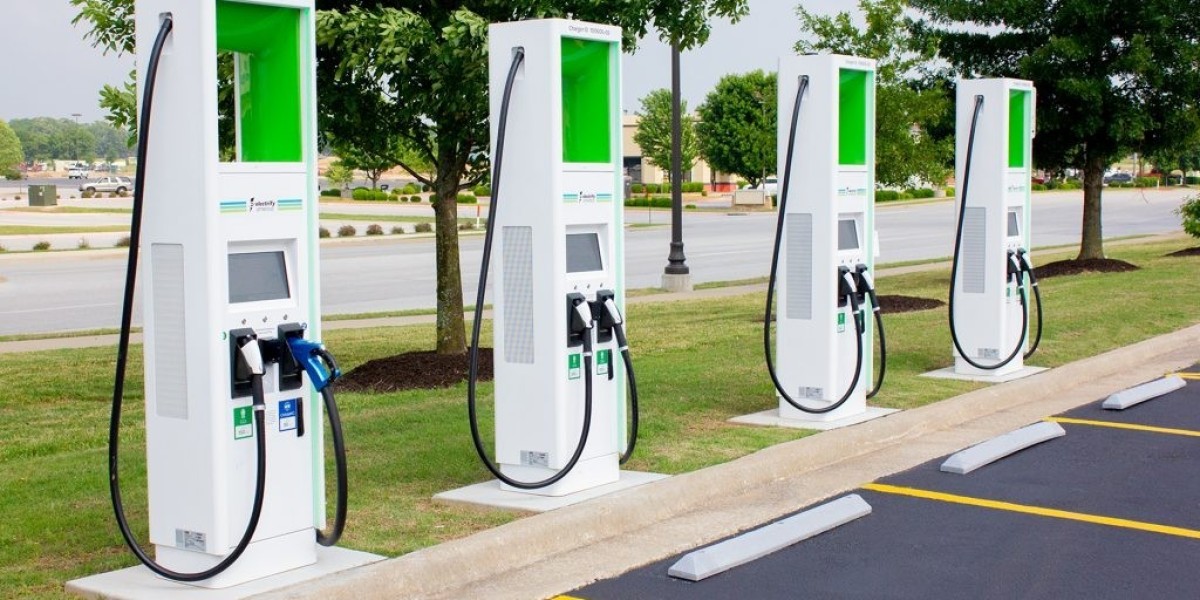As electric vehicles (EVs) become better known, the requirement for EV chargers installation is developing. Condominiums, with their shared spaces and offices, face exceptional difficulties with regards to introducing these chargers. This article will direct you through the most common way of EV charger installation in condominiums, guaranteeing everyone can charge their vehicles without any problem.
Figuring out EV Chargers
EV chargers come in three levels:
1. Level 1 Chargers: These are the slowest chargers, utilizing a standard 120-volt outlet. They can require as long as 20 hours to charge a vehicle completely.
2. Level 2 Chargers: These chargers utilize a 240-volt outlet, like what is utilized for electric dryers or stoves. They can charge a vehicle in 4-8 hours.
3. Level 3 Chargers: Otherwise called DC quick chargers, these are the speediest, charging a vehicle in around 30 minutes. However, they are costly and require exceptional gear.
For most condominiums, Level 2 chargers are the most ideal choice as they balance charging pace and cost.
Difficulties of EV Charger Installation in Condominiums
1. Shared Spaces: Condominiums have shared parking areas or carports, making it hard to distribute space for EV chargers.
2. Cost: Introducing EV chargers can be costly, and sorting out who pays can be interesting.
3. Electrical Capacity: Not all structures have the electrical ability to help various EV chargers.
4. Approval: Introducing EV chargers frequently requires endorsement from the apartment suite board and conceivably different occupants.
Steps toward EV Charger Installation
1. Assess the Need: Decide the number of occupants that as of now have EVs or want to get them soon. This aide in concluding the number of chargers that are required.
2. Consult an Electrician: An authorized circuit repairman can evaluate the structure's electrical limit and propose the best areas for the chargers.
3. Choose the Charger Type: Settle on Level 1 and Level 2 chargers. Level 2 chargers are by and large liked because of their quicker charging times.
4. Get Approval: Present the arrangement to the condo board. Be ready to address worries about cost, space, and installation.
5. Plan for Cost: Conclude how the expense will be covered. Choices incorporate utilizing condo reserves, charging EV proprietors an expense, or applying for awards and impetuses.
6. Install the Chargers: When supported, the circuit tester can introduce the chargers. Guarantee they are introduced in advantageous areas and have clear signage.
7. Set Up an Installment System: Assuming EV proprietors will be charged for utilizing the chargers, set up a framework for following utilization and gathering installments.
Concrete Steps for Condominium Boards
Stage 1: Survey the Need
Begin by looking over the inhabitants to comprehend the number of right now own EVs or plan to get one soon. This will give a reasonable image of the interest and help in arranging the quantity of chargers required.
Stage 2: Counsel an Expert Electrician
Enlist an authorized electrical expert to evaluate the structure's electrical limit. The electrical technician will:
- Check in the event that the flow electrical framework can deal with the extra burden.
- Distinguish the best areas for the chargers, taking into account factors like vicinity to parking spots and existing electrical boards.
- Give a gauge to the expense of installation.
Stage 3: Pick the Charger Type
In view of the circuit repairman's evaluation and occupant needs, settle on Level 1 and Level 2 chargers. While Level 1 chargers are less expensive and more straightforward to introduce, they are a lot more slow. Level 2 chargers are more costly however offer quicker charging times, which can be more helpful for occupants.
Stage 4: Get Endorsement
Present the arrangement to the apartment suite board and perhaps to the inhabitants. Address normal worries, for example,
· Cost: Give a nitty gritty breakdown of the costs in question and conceivable subsidizing choices.
· Space: Make sense of how parking spots will be dispensed and the way that the chargers will be open to everyone.
· Installation Process: Portray the installation interaction, including any interruptions it could cause.
Stage 5: Plan for Cost
Conclude how the installation costs will be covered. Choices include:
· Townhouse Funds: Utilize the apartment suite's save reserves.
· Client Fees: Charge EV proprietors an expense for utilizing the chargers. This can be a one-time installation expense or a month to month charge.
· Awards and Incentives: Apply for government or confidential awards and impetuses for EV charger installations.
Stage 6: Introduce the Chargers
Once endorsed, continue with the installation. Guarantee that the installation is finished by an authorized circuit tester and conforms to every nearby code and guidelines. The chargers ought to be introduced in available and helpful areas, with clear signage showing their presence.
Stage 7: Set Up an Installment Framework
In the event that clients will be charged for utilizing the chargers, set up a framework for following utilization and gathering installments. Choices include:
· Subscription: Charge a month to month membership expense.
· Pay-Per-Use: Charge in view of how much power utilized. This can be followed utilizing savvy chargers that screen use.
Tips for Smooth Installation and Utilization
1. Clear Communication: Keep inhabitants informed in the interim. Hold gatherings, send pamphlets, or make a committed website page with refreshes.
2. Signage: Utilize clear signage to demonstrate the area of the chargers and any guidelines for utilizing them.
3. Maintenance: Consistently keep up with the chargers to guarantee they are working appropriately. Have an arrangement set up for resolving any issues instantly.
4. Education: Instruct occupants about EV charging, including how to utilize the chargers and any expenses included.
Advantages of Introducing EV Chargers
1. Increased Property Value: Having EV chargers can make the condo more alluring to possible purchasers or leaseholders, expanding its worth.
2. Environmental Benefits: Empowering the utilization of EVs can lessen the apartment suite's general carbon impression.
3. Convenience: Inhabitants with EVs will see the value in the accommodation of having the option to charge their vehicles at home.
4. Future-Proofing: As EVs become more normal, having chargers previously introduced guarantees the condo is ready for future interest.
Conclusion
EV charger installation in a condo can be testing, yet with cautious preparation and clear correspondence, it very well may be done without a hitch. By evaluating the need, talking with experts, getting endorsement, and making arrangements for costs, condominiums can give this important convenience to their occupants. The advantages of expanded property estimation, natural effect, and inhabitant comfort make it a beneficial speculation for what's in store.








